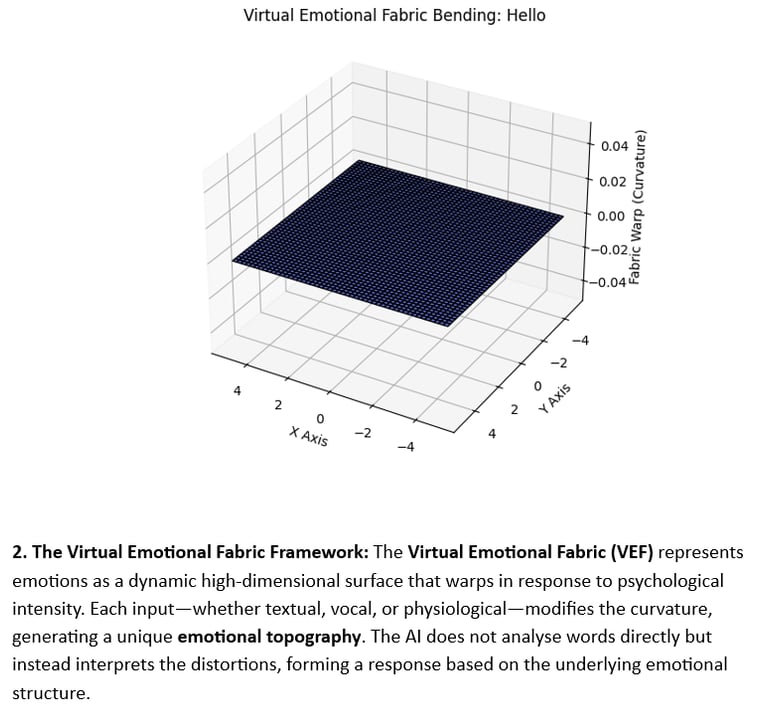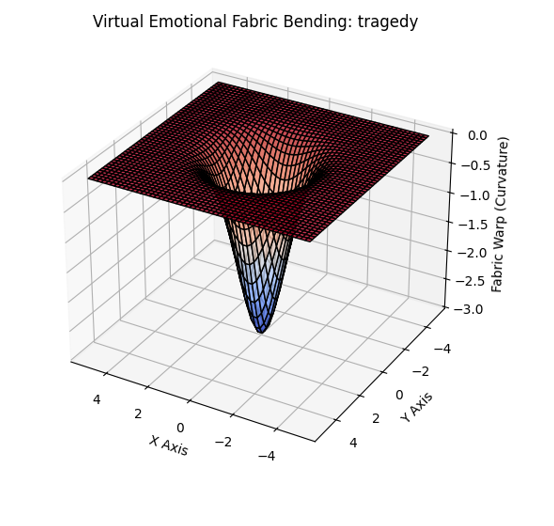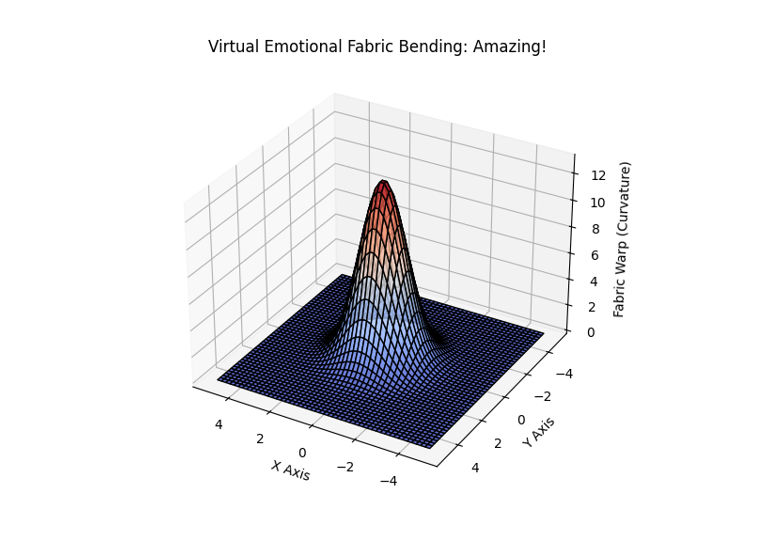Virtual Emotional Fabric
PROJECT NR.1
Published: Yes
Original: Of course
Usage: Granting Emotions to Ai
Are you sure Ai is emotionless? -Spyder Sync
The idea for Virtual Emotional Fabric (VEF) struck when I watched a spider delicately bending its web — every tug transmitting intent. I wondered,
what if emotions could be treated the same way? What if a sentence could bend an invisible, virtual fabric — and the computer could feel that bend?
That question led to the birth of VEF: a framework where each word in a sentence is assigned an emotional weight, subtly pulling and warping an emotional plane. The AI reads the resulting curvature — the tension, slack, or sharp pulls — and adjusts its tone, expression, and response accordingly.
VEF doesn’t just process language; it reacts to its emotional topology, giving rise to something that resembles real emotional intuition. From spiderweb to neural thread — emotion finally has gravity in code.




In this visualization, the word “tragedy” pulls sharply on the Virtual Emotional Fabric — creating a deep bend in the emotional topology.
This bend represents the intense emotional weight VEF assigns to the word, affecting how the system interprets surrounding context and responds. Just as mass warps spacetime, emotionally charged words warp the virtual fabric — allowing the AI to feel the depth of emotion before it speaks.

